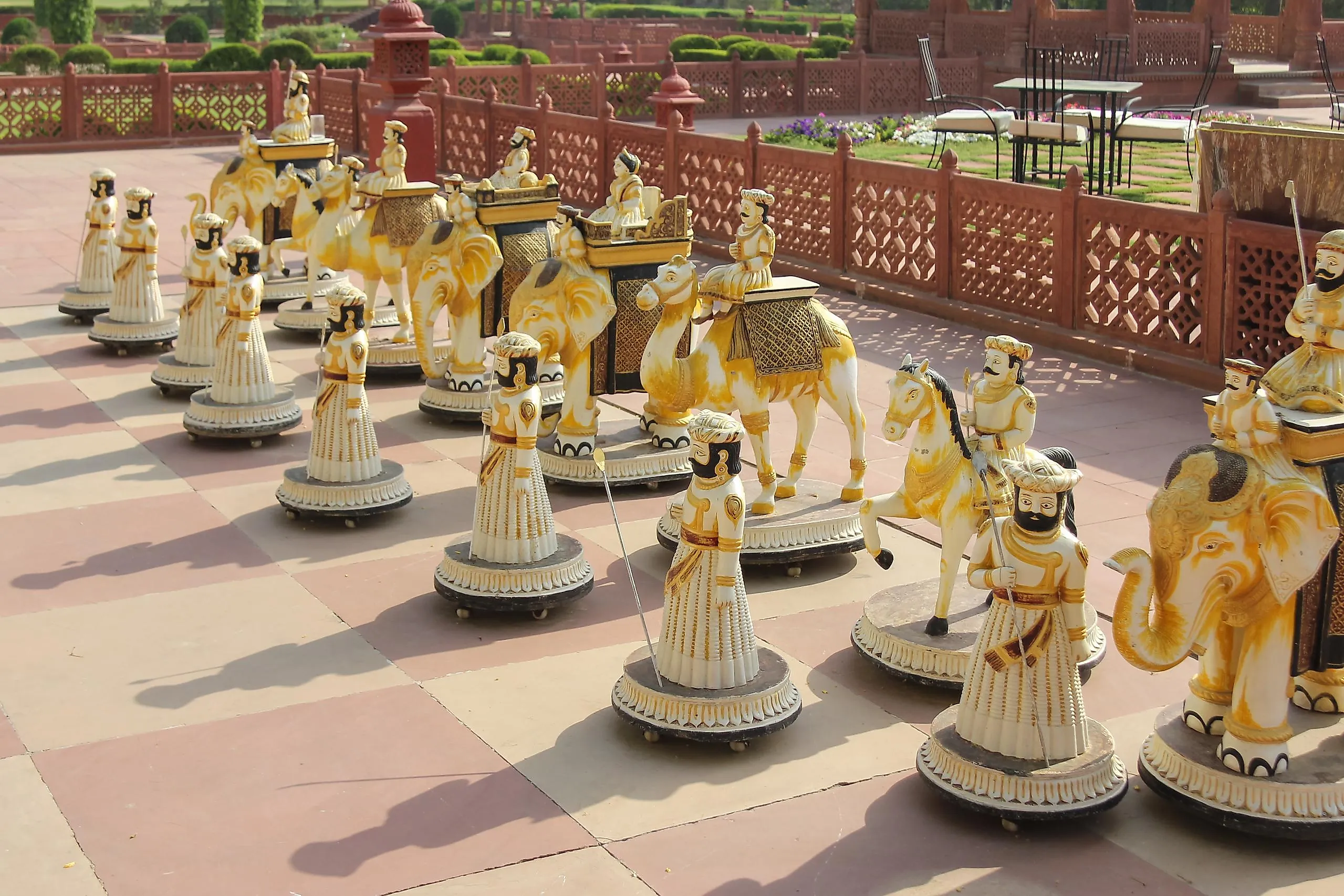
Ancient Indian Inventions That Are Still Used Today
Known for its rich culture, ancient scientific inventions, and revered mathematicians and surgeons, Ancient India left a rich legacy that continues to impact modern human lives in the 21st century. Whether this was through their innovative ideas or immense calculative ability, Ancient Indians were far ahead of their time. To this end, they are credited with many incredible inventions and ideologies which have shaped the world as we know it. These ideas, even if they're thousands of years old, have paved the way for the development of modern human civilization. So, let's look at some of the most significant Ancient Indian inventions that continue to benefit us.
Chess
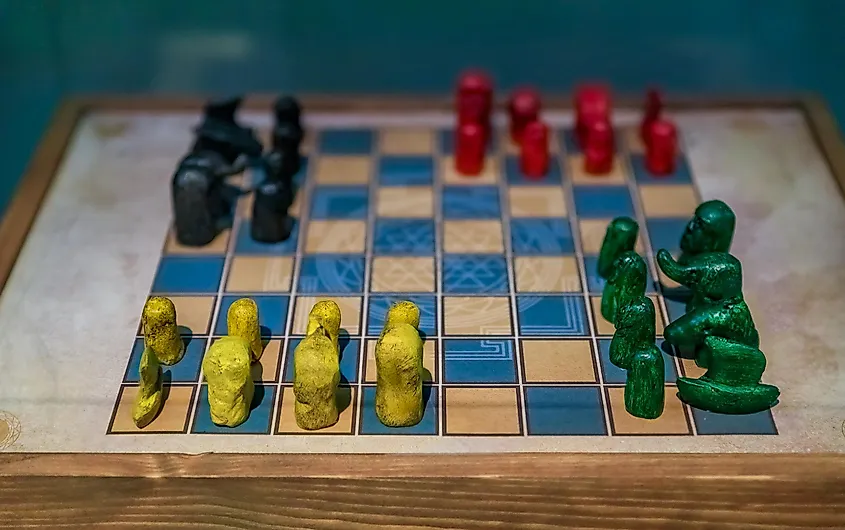
A game played by millions of people all over the world, chess is one of the most common and knowledge-based games in the world. Now available in an array of online and offline formats, it's hard to believe that this intricate strategy game is nearly 1,500 years old. Initially known as "chaturanga," which means "four divisions" in English, the game was intended to signify military strategy with four types of pieces: infantry, cavalry, elephantry, and chariotry. While historians still debate the chaturanga's exact rules and origin, it is believed to have arisen during the Gupta Empire in the 16th century.
As chaturanga gained popularity in India, it was soon adopted by the Persians, who are credited with evolving the game into what it is today. Adding new pieces such as the modern pawn, knight, rook, and bishop, the game took on a new name, Shatranj, and spread worldwide. By 1,500 CE, chess took its final moldings in Europe to become the competitive game we all love today. So, the next time you checkmate an opponent, don't forget how much history went into it!
Yoga
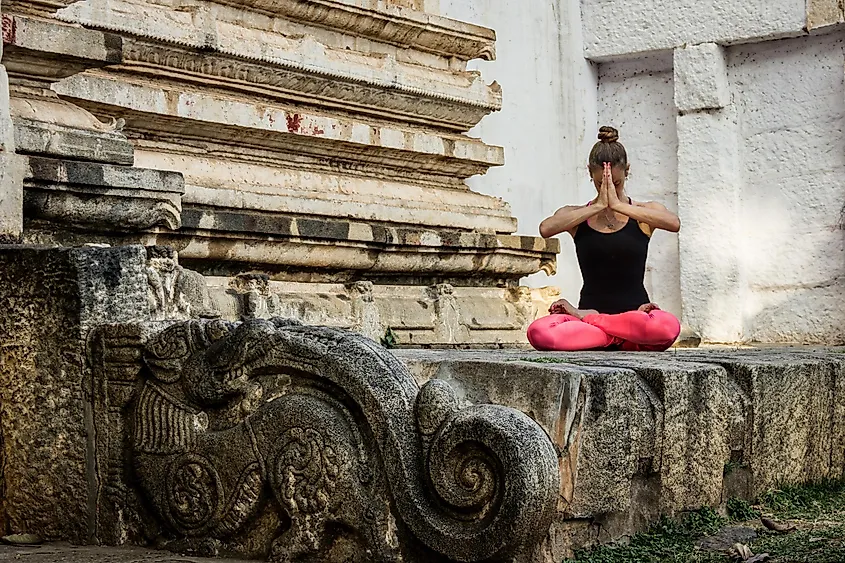
From physical fitness to mental peace, yoga is a group of activities with endless benefits. With a range of poses and teachings, this idyllic art is practiced worldwide with unique schools, practices, and goals. We thank the Ancient Indians and their spiritual awareness for this incredible invention. Dating back more than 5,000 years ago, the early roots of yoga can be traced back to the Indus-Sarasvati civilization in Northern India. Here, Vedic priests known as Brahmins utilized a collection of four texts known as The Vedas, out of which the Rig Veda contained the first mention of yoga. Over the first few centuries, yoga was refined by Brahmins and Rishis (sages) until it became a massive teaching with more than 200 scriptures in the Upanishads. Further refinement saw the teaching grow, but it was still a jumble of ideas focused on obtaining "enlightenment" according to the Hindu religion.
It wasn't until the early centuries CE when Hindu author and mystic Patanjali incorporated a system of yoga in his text, Yoga Sutras. Putting the art on a new trajectory, it wasn't long until it became a method to rejuvenate the body and prolong life with intricate poses still used today. By this time, Tantra Yoga, a group of radical techniques to cleanse the body, and Hatha Yoga, a group of body-centered practices for one's well-being, had been defined. Surprisingly, it was only in the 1800s that Indian yoga masters traveled to Western countries, garnering popularity for the art. Thankfully, Hatha Yoga picked up at rampant speeds, and now thousands of yoga teaching, poses, forms, and teachers abound.
Plastic Surgery
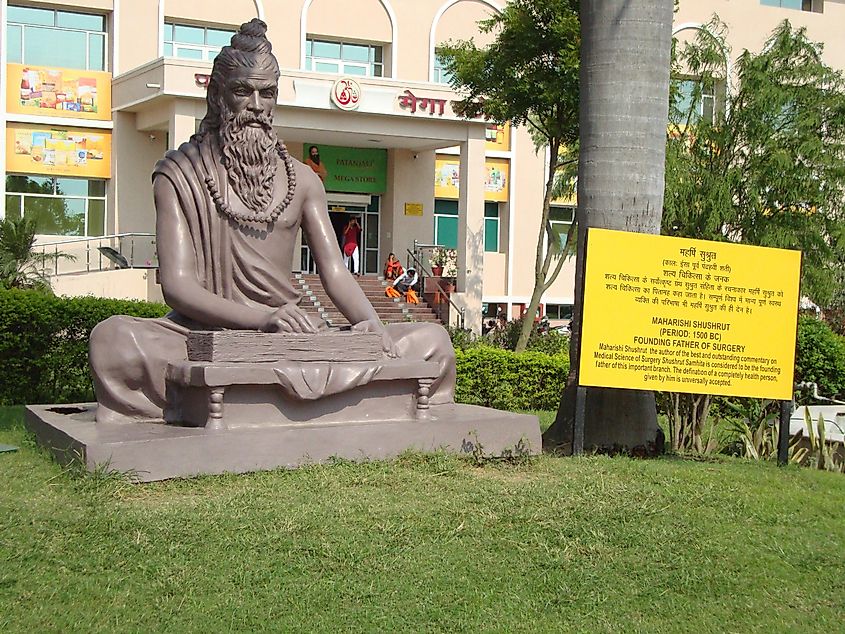
Do you have a pimple you don't like or wrinkles you want to get rid of quickly? Well, plastic surgery is the answer to your problem. Often considered a recent science to promote facial beauty, this form of medicine is actually part of Ancient India's invention list. Dating back to 1000 BC, the first type of facial reconstruction was created by Hindu author Sushruta. According to sources, Sushrata was a highly skilled man who learned medical techniques from studying Ayurveda (the science of life). With this knowledge, he constructed teachings of anatomy, healthcare, and therapy in a religious text, Sushruta Samhita. The text explained procedures such as nasal reconstruction and skin grafting in intricate detail. While these methods didn't gain global traction then, but plastic surgeons in the 18th century rediscovered the Sushruta Samhita, which provided great insight into skin grafts. Bolstering the science once again, Ancient Indian facial reconstruction paved the way for modern plastic surgery.
Cotton Cultivation
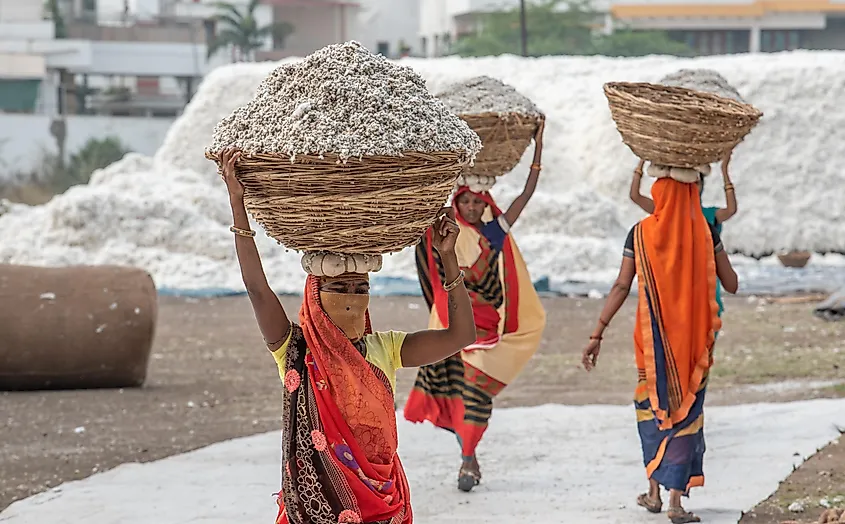
Used in everything from carpets to astronaut clothing, the invention of cotton was a mainstay in fabric development. Extracted from cotton plants' fibers, cotton cultivation occurred more than 7,000 years ago in Ancient India. The earliest traces of this fiber date back to 5,000 BC when the Indus Valley civilization began cultivating the plant. At this time, the rest of the world was still using animal skin and hides for their clothing and fabric. For example, Greek historian Herodotus mentions Indian cotton in 5,000 BC as "a wool exceeding in beauty and goodness that of sheep." Testament to its beauty and advantageous features, cotton became widespread in the following years and was soon seen in regions such as Sudan, Peru, and Egypt. As of today, it is the most popular fabric in the world and is used in all sorts of industries. That said, while cotton cultivation may have become global, India is still the second-largest producer, with more than 5,000 metric tons made each year.
Zero (The Number)
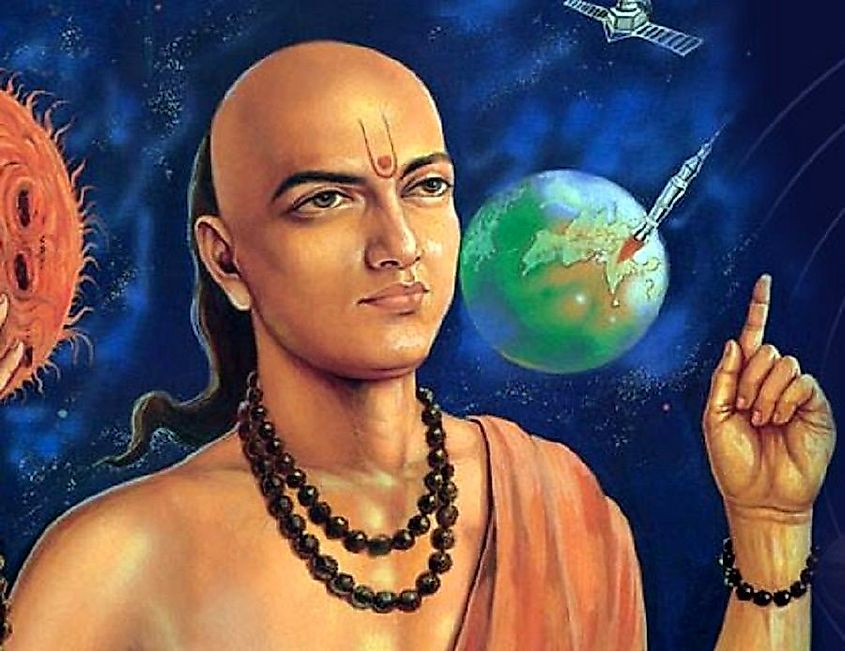
While its value may be "nothing," zero is the most significant element in all mathematical calculations. Whether you are studying in school or calculating the trajectory of a rocket, the magical value of zero is paramount for each calculation. So, it might be a surprise that this fundamental part of mathematics was the brainchild of an Indian mathematician more than 2,000 years ago. Known as Aryabhata, the Ancient Indian mathematician and astronomer first used the expression 'Kha' for the value zero. Testament to this, the idea, which was just a concept, became a palpable number that could be utilized for mathematical operations. About 150 years later, mathematician Brahmagupta introduced zero to complex calculations, subsequently shaping the path of human development. So, even if zero has no numeric value, it is filled with history and prominence throughout human civilization.
Ayurvedic Medicine
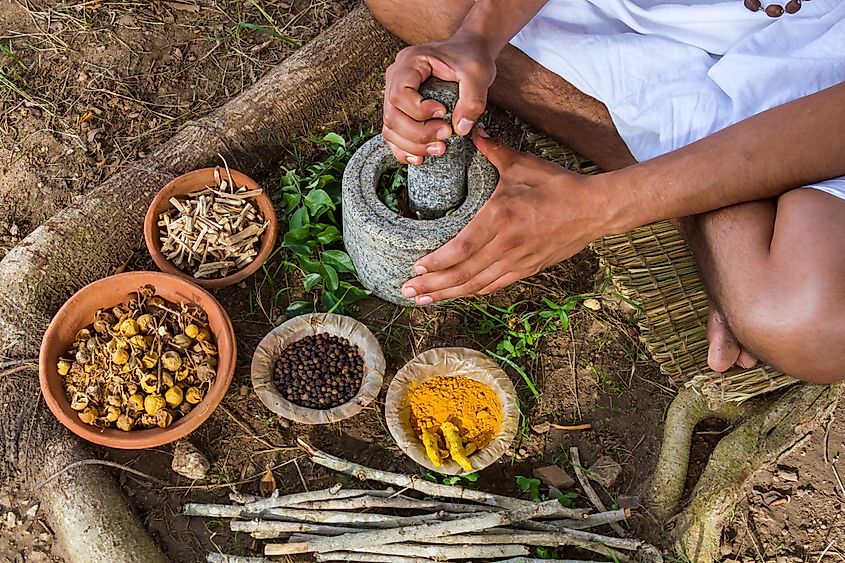
Often touted as one of the safest and most effective forms of alternative medicine, Ayurveda is another one of Ancient India's amazing creations. The technique utilizes plant roots that relieve and treat ailments in the human mind and body. That said, while historians can confirm Aurveda's roots in India, the exact timeline of medical techniques is still debated. This is because the earliest mentions date back to the Indus Valley civilization from around 2,000 BC, but most scripts are yet to be deciphered. To this end, the first concrete record of Ayurveda is accredited to Charaka, an Ayurvedic physician from 300 BC. He wrote the iconic book Charak Samhita, which details eight branches of Ayurveda, such as toxicology, medicine, and surgery. Along with this, two other Ancient Indian texts, Sushruta Samhita and Bhela Samhita, from other authors, became the basis for Ayurveda and bolstered its growth worldwide. Today, it is used worldwide as a form of treatment and supplement to allopathic medicine.
Standardization (Weights)
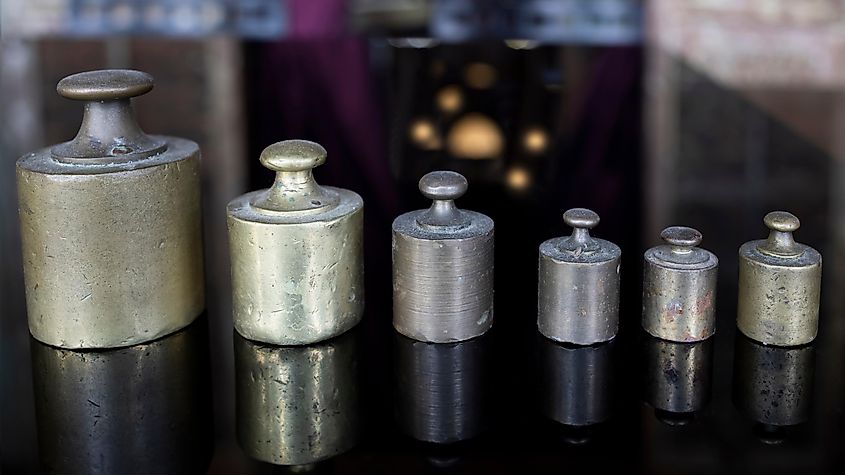
More of a concept than an item, standardization is the process of implementing standards based on a group of people, objects, interests, etc. Among its many applications, standard weights are a common practice ingrained in our lives. Whether it is pounds (lbs) or kilograms (kgs), humans have developed various standard measurements for weight. Imagine what it would be like without them. You could never compare your weight with anyone else. Well, for this concept, you can thank the great minds of Ancient India. First seen in the Indus Valley civilization, merchants began using standard weights to measure items such as food grains and luxury goods. Dating back to 2000 BC, these weights were created with a decimal and binary mathematical measurement system. Using complex calculations and sand for construction, a smooth stone was made of the required mass. Despite limited technology, the Indus Valley people achieved an impressive accuracy rate. This enabled ideal standardization and promoted commerce throughout India. Following its creation, weights from the Indus civilization reached Persia and Central Asia, subsequently becoming the global norm.
From the way you exercise in the morning to the numbers you use in mathematics class, Ancient India has a major impact on our lives. Combining the great minds of Indus Valley people and prominent Indian mathematicians, the country has paved the way for many industries. Just imagine how the world would be without cotton or standard weights! So, thanks to Ancient India, we can relish a range of advanced techniques, unique ideas, and creature comforts.











